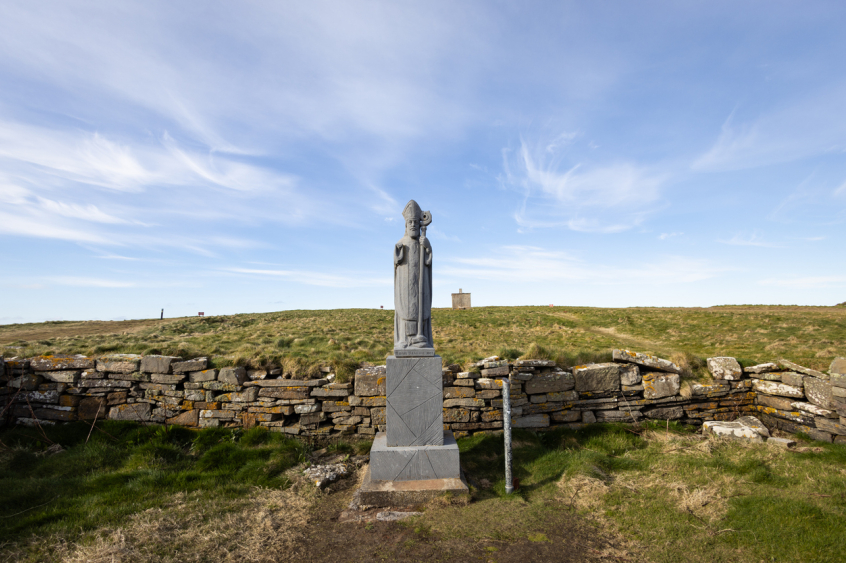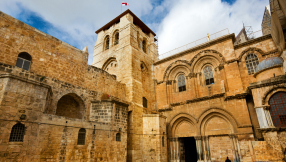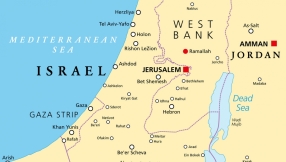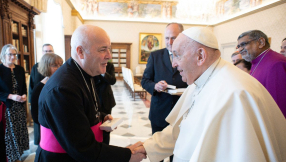
The 17 of March is St Patrick’s Day. Who was St Patrick and why is he the patron saint of Ireland? This is the story ...
Who was St Patrick?
Patrick was a key figure in the spread of Christianity in Ireland. There are many stories and legends about him, but we do know quite a lot about Patrick’s life because we have some of his writings. In his old age, he wrote an autobiographical account in Latin called “Confessio”. In English, his account is usually called “The Confessions of St Patrick”, and it is a brief story of his life, told through his own eyes. His writings reflect those of a godly, honest, and humble man, with love of the Irish people.
St Patrick's World
It is helpful to understand the background at the time of St Patrick, in order to put him in historical context. In AD 380 Christianity became the official religion of the Roman Empire, and the Christian faith became widely adopted, including in the Roman northern province of Britannia, which included what is today England, Wales and lowland Scotland. The official language of Britannia (Britain) and the Church was Latin, but the native Britons spoke ancient British, a Celtic language which is the forerunner of modern Welsh.
Meanwhile, Hibernia (Ireland) and Caledonia (northern Scotland) had never been conquered by the Romans, and had a religion led by druids. It is into this period that Patrick lived. This was all before the fall of the Roman Empire and before the coming of the ‘English’ to Britain.
Early Life
We can piece together Patrick’s life from his own writings and other early histories, although the exact dates are open to debate. Although Patrick is heavily associated with Ireland, he was not actually Irish by birth. He was born as a native Briton and was also a Roman citizen. He wrote that he grew up in a small villa with his father Calpurnius, who was a town official, near the settlement of Bannavem Taburniae.
His family were Christian, and his father was a church deacon, and his late grandfather Potitus had been a priest. The town of Kilpatrick on the River Clyde near Glasgow is so named because it was believed he came from there, although alternative theories include places in southern Wales, Cumbria or Somerset.
Taken to Ireland
He wrote that when he was about sixteen years of age, he was captured by Irish raiders, and as had happened to many thousands of other people, he was taken into captivity in Ireland and sold as a slave. He was bought and put to work as a shepherd, tending sheep. We do not know where, but it was inland, and according to one tradition it was on Mount Slemish in County Antrim, and according to another it was in County Mayo. He used the time to pray many times a day, and as he did so he wrote that his love of God and his faith increased, and he felt the Holy Spirit at work.
Escape back to Britain
He wrote that after about six years he escaped and went about 200 miles to a port, where he got a lift on a ship. He then spent three days at sea and came to Britain. After some adventures, he eventually found his home and family and returned to them. However, after a while he said that he had a vision of a man begging him to return to Ireland and bring the Gospel. In preparation he spent about fifteen years in training as a deacon, then as a priest. It is believed he spent time training in Gaul (modern day France) under Germanus, bishop of Auxerre. He took or was given the Latin name “Patricius”, from which we get the name in English as Patrick. Before he returned, Patrick was ordained as a missionary bishop to pastor the Christians already in Ireland, and to mission among the pagan Irish.
Return to Ireland
When Patrick returned to Ireland, he seems to have started in Ulster. About 432, he started his first church which met in a barn in the village of Saul near Downpatrick. There is now a small stone church there, which marks the reputed site. He wrote that he longed to go back to his homeland and his family, and visit Gaul again, but he felt compelled by the Holy Spirit to remain in Ireland where God wanted him to be, because there was much work to be done. Patrick and his followers would go from village to village. Typically, they would enter a village, preach, baptise, form a church, train the leaders, and then as a bishop he would ordain priests. He wrote that he had baptised many thousands of people, and ordained hundreds of priests.
One story, which he did not record but has been popularly attributed to St Patrick, is that he used the shamrock, which is a green clover with three leaves, as a metaphor to explain the Trinity, because it is one plant with three distinct parts. This then became an Irish symbol, and as a result green became a colour associated with St Patrick and Ireland.Patrick’s mission lasted about thirty years, during which time he and his disciples had evangelised most of Ireland. As a result, he became known as the ‘Apostle of Ireland’. He says that he gave gifts and payments to others, but never accepted any gifts himself, in order to avoid any accusations of dishonesty, or that he was doing it for selfish purposes.
He also tried to establish good and honest governance and worked to abolish slavery and improve social justice. In old age he retired to Saul where he had started, which is likely where he wrote his Confessions. According to the annals he died there on March 17 usually given as in AD 461. Unlike other saints he has no elaborate shrine nor tomb, and one disputed tradition has it that he is buried in the grounds of Down Cathedral in Downpatrick.
Patron Saint
Unlike St Andrew who never went to Scotland, and St George who never went to England, St Patrick actually ministered in Ireland. Although there were some Christians in Ireland before Patrick came, it was during his ministry that the Church was properly established across Ireland. By the seventh century, Patrick had already come to be revered as the patron saint of Ireland. He was an ancient Celtic saint but was never formally canonised by the Roman Catholic Church. His story has become associated with Irish identity and history.
Legacy
The groundwork put in by Patrick helped Christianity to take hold in Ireland. The Celtic Church which Patrick developed became part of a network of Celtic churches which covered the Celtic world of Ireland, western Britain, and Brittany, but connected to the main Western Church. What is remarkable is the importance of Latin. All the evangelism and church planting were done without the Bible in Irish. The preaching was done in Irish, but the Bible was the Latin Vulgate. Missionary saints from Ireland then took the Gospel beyond their shores. For example, St Columba went to the Picts, St Aidan to the Northumbrians, St Columbanus to the Burgundians, St Papar to Iceland, and St Brendan may even have gone as far as North America.
Churches named after St Patrick
All over Ireland are many churches dedicated to St Patrick, either because historically he founded them, or because they are named after him. Patrick reputedly founded a church at Armagh, in or around the year 445, which later became the seat of the first archbishop of Ireland. It has a status like Canterbury has in England. Armagh remains the ecclesiastical capital for All Ireland. It has two cathedrals both dedicated to St Patrick - one for the Catholic Archbishop of All Ireland (Catholic Church in Ireland), and the other for the Anglican Archbishop of All Ireland (Church of Ireland). The largest cathedral in Ireland, founded in 1191, is St Patrick’s Anglican Cathedral in Dublin. Around the world many churches were dedicated to St Patrick because they had some link to an Irish community. There are many in the US, and the most famous is St. Patrick’s Cathedral, in Manhattan, New York which opened in 1879.
St Patrick’s Day
St Patrick is celebrated on the anniversary of his death on 17 March. At first it was a day of remembrance, but over time St Patrick’s Day has evolved into a major national and patriotic holiday in Ireland, and sometimes more so, among Irish communities and people of Irish heritage around the world. St Patrick’s Day falls during Lent, and it has often been a one-day reprieve, which may also have helped its popularity. Mass migration from Ireland to North America and Australia took St Patrick’s Day around the world, but it only became a public holiday in Ireland in 1903. Sometimes Irish people wear shamrocks on St Patrick’s day, and they use it as an excuse for a good craic.
St Patrick’s Flag
Over time a cross developed known as St Patrick’s cross, which is a red diagonal cross on a white background, called the red saltire. In 1801, St Patrick’s Cross was added to the Union Flag of Great Britain, which already included the cross of St George over the cross of St Andrew. The red cross of St Patrick was placed inside the white diagonal of the cross of St Andrew to create the Union Flag of the United Kingdom. St Patrick’s flag is still flown on churches of the Church of Ireland, and is flown on Anglican churches on St Patrick’s Day. It can sometimes be seen at other Irish events.
Parades
The tradition of St Patrick’s parades started with Irish communities in North America. The earliest recorded St Patrick’s Day celebration in America is believed to have been held in 1601, in what is now St Augustine, Florida. The first St Patrick’s Day parade is believed to have taken place in Boston in 1737, and the more famous New York parade began in 1764. A parade has been held in Montreal, Canada since 1824. In more recent decades, the idea of St Patrick’s Day parades has been adopted in towns and cities in Ireland, and other places round the world with Irish communities. The first St Patrick’s parade in Ireland was held in Waterford in 1903, and the first official parade in Dublin was in 1931.
Legacy
Today Patrick is a common name in Ireland, often shortened to Paddy. St Patrick is a unifying character and is adopted and loved by all Irish people, whether Catholic or Protestant. He is a saint for all of Ireland. He is part of the common shared ancient Church history which predates the modern divisions. Increasingly St Patrick’s Day has become a national day of Irish patriotism embraced by all Irish people. It is more than likely that St Patrick himself would not approve of the unholy aspects of some of the celebrations. A good place to end is the beautiful collect for St Patrick’s Day, which reads, “O God, who chose the Bishop Saint Patrick to preach your glory to the peoples of Ireland, grant, through his merits and intercession, that those who glory in the name of Christian may never cease to proclaim your wondrous deeds to all.”













